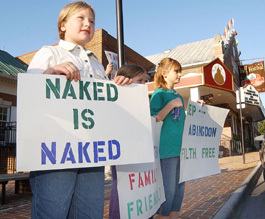

By Lewis Loflin
Update April 2025: Barter Theatre’s financial woes persist. A 2019 shortfall of $500,000—tied to a 16% tourism drop—hasn’t fully resolved, with ticket sales still lagging post-pandemic. Recent reports suggest ongoing reliance on donations amid uneven recovery.
In 2011, proposed cuts by the National Endowment for the Arts (NEA) and Virginia Commission for the Arts (VCA) rattled Barter Theatre in Abingdon, Virginia. The Virginia House of Delegates aimed to halve VCA’s $4.1 million budget in FY2011 and eliminate it by 2012 (Style Weekly, March 16, 2010). Though the cuts were softened—VCA received $4.1 million annually through 2012—Barter faced a $400,000 fundraising gap. Artistic Director Richard Rose warned:
Certainly government cuts...make a difference. They’ve upped the ante for us in terms of having to rely more [on] individual patrons...A reasonable increase in ticket prices wouldn’t hurt us. —Richard Rose, BHC, November 22, 2011
Rose hinted at cutting programs, often citing youth outreach to justify funding pleas. I argued then—and now—that ticket hikes or a solid business plan, not taxpayer bailouts, were the answer.
Barter’s long leaned on public funds—NEA, VCA, Virginia Tobacco Commission (VTC)—often mislabeled as "economic development." VTC grants (e.g., $100,000 in 2011 for drainage) and local contributions propped up a theater I see as a luxury for Abingdon’s affluent, not a job creator. Yet, other regional flops—like the Ralph Stanley Museum—suggest tourism’s shaky returns. By 2019, Barter’s $500,000 loss (WJHL, August 24, 2019) and a 16% tourism dip forced a 20% budget cut and 20 job losses (Artsmagazine.info, November 22, 2009).
Opened June 10, 1933, in Abingdon, Barter Theatre is America’s longest-running professional theater. Founder Robert Porterfield bartered tickets for food during the Great Depression, earning its name. Designated Virginia’s State Theatre in 1946, it launched stars like Gregory Peck and Patricia Neal. Today, it draws 125,000-145,000 visitors yearly (Virginia Living, March 13, 2025), buoying Abingdon’s economy—$40 million annually, per a 2019 VTC claim—yet struggles financially without subsidies.
Southwest Virginia’s job losses dwarf Barter’s woes. Dr. Steb Hipple’s data (ETSU, Q3 2016) showed Tri-Cities’ labor force at 193,170 by 2018, down 54,795 from 2009’s 247,965—a 22% drop amid a supposed boom. BLS stats:
By 2025, disability, poverty, and retirements likely worsened this, though updated data’s scarce. Per capita income in Bristol, VA (2018: $21,589) lags 1970’s inflation-adjusted minimum wage ($10.46/hour, $21,756/year). See Smyth County Job Losses.
Barter’s 90+ years haven’t solved its reliance on handouts. Post-2019, ticket sales (64% of its $7.6M budget, per Roanoke.com, April 10, 2023) faltered—e.g., "Shrek" lost $300,000 in 2019. VCA and NEA aid persists (e.g., 2023 VCA grant), but tourism’s inconsistent recovery keeps it vulnerable. Visit www.bartertheatre.com to support them—or question why tax dollars still flow.